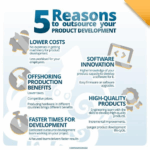Finding the right vendor is like searching for a needle in a haystack—it takes time, effort, and a keen eye for detail. The vendor selection process is a crucial step in ensuring your business runs smoothly, maintains quality, and stays cost-effective. The wrong choice could lead to financial losses, delays, and even damage to your brand’s reputation.
A study by Deloitte found that 57% of companies consider vendor management a strategic priority because suppliers play a key role in business success (Deloitte, 2024). Whether you need a manufacturer, supplier, or service provider, choosing the right one can give you a competitive edge.
In this guide, we’ll break down the vendor selection process step by step, discuss the criteria for selecting a vendor, and show you how to evaluate vendors effectively. Plus, we’ll introduce you to Brand New MD, a trusted sourcing expert, to help streamline your vendor selection journey.
Understanding the Vendor Selection Process
What is the Vendor Selection Process?
The vendor selection process refers to the structured approach businesses take to find, evaluate, and choose vendors that meet their needs. It ensures companies select vendors based on quality, cost, reliability, and strategic fit.
According to Gartner, 70% of procurement leaders say that poor vendor selection leads to increased operational risks (Gartner, 2024). That’s why having a systematic approach is critical.
Challenges in Selecting Vendors
Lack of Reliable Data
Many businesses struggle to find accurate information about potential vendors. Vendors may exaggerate their capabilities or hide critical details, making it challenging for businesses to make informed decisions. Insufficient transparency renders firms vulnerable to engaging suppliers that do not correspond with their objectives. This concern is heightened in international sourcing, where language barriers and lack of direct supervision complicate the vetting procedure.
Hidden Costs
Some vendors may come in with the seemingly low upfront expense, whereas further add-on fees for shipping, tariffs, customization, and service charges might considerably inflate the total bill. Therefore, businesses must conduct a full cost analysis, considering all prospective expenses ahead of time before proceeding with a vendor. Otherwise, they risk unexpected budget overruns that make the vendor relationship untenable.
Quality Control Issues
Some of the biggest challenges in vendor selection arise from maintaining consistent quality. Some vendors produce high-quality goods in the beginning but do not maintain this later. Companies need to stipulate the highest quality assurance measures: inspection of products, testing, and subsequent monitoring. These ensure that risks are minimized, followed by supplier quality assurance of product samples and compliance with international quality standards.
Regulatory Compliance:
Vendors must comply with the regulatory standards specific to their industries and regions. Failure to do so could result in fines, lawsuits, and scandals. Companies should evaluate compliance as it relates to their potential vendor regarding environmental policies, labor laws, and safety regulations.
One way to alleviate the above issues is to use expert sourcing firms like Brand New MD, which help guide companies to find and onboard the best suppliers.
Important Steps in Vendor Selection
Step 1: Identifying Business Needs and Requirements
Before going to the marketplace, companies should have a pinpoint definition of what they need. This step looks into identifying all the specific needs that must be fulfilled by the vendor. Major considerations are as follows:
Budget Constraints
The most important step in vendor selection is to define the budget. Companies should assess how much they can afford to spend on obtaining products or services while being profitable. An unrealistic budget could lead to selecting poor vendors, whereas a flexible budget could lead to overspending. Long-term costs should also be considered, such as maintenance, support, and scalability.
Product/Service Specifications
Businesses must describe the technical and functional specifications for the products or services they require in as much detail as possible. This should include material quality, performance expectations, durability, customization possibilities, and compatibility with existing enterprise systems. Specificity in these requirements will prevent some misunderstandings between buyers and vendors and assist in better evaluating the capabilities of vendors.
Delivery Expectations
Timely delivery is a key element that ensures smooth operation. Thus, the vendor needs to have clear delivery timelines and supply chain logic.
Businesses should also have contingency plans in place for potential delays, especially when working with international suppliers.
For example, research from McKinsey states that companies that align vendor selection with long-term business goals experience 20% higher efficiency (McKinsey, 2024).
Step 2: Researching Potential Vendors
Once requirements are set, it’s time to select vendors by researching potential candidates.
Online Directories
Platforms like Alibaba, ThomasNet, and Global Sources provide a comprehensive list of vendors across various industries. These platforms allow businesses to compare suppliers based on pricing, capabilities, and customer reviews. However, it is essential to verify the credibility of vendors before making a decision, as not all listed suppliers meet high-quality standards.
Referrals and Industry Connections
Word-of-mouth recommendations from trusted sources can save time and effort. Industry associations, trade shows, and business networks are excellent resources for finding reputable vendors. A vendor with a strong industry reputation is more likely to provide reliable services and maintain high standards.
Sourcing Experts
Working with experts like Brand New MD ensures that businesses connect with vetted and reliable suppliers. Sourcing experts conduct background checks, negotiate better deals, and handle quality assurance processes, making vendor selection more efficient and risk-free.
According to PwC, 80% of businesses prefer working with pre-vetted suppliers to reduce risks (PwC, 2024).
Criteria for Selecting a Vendor: What to Consider?
Financial Stability and Pricing
A vendor’s financial health is a good indicator of reliability. Companies should evaluate:
- Stable Cash Flow: Vendors with financial stability are less likely to face operational disruptions or fail to deliver on commitments. Businesses should review financial statements, credit ratings, and past payment histories to assess financial health.
- Transparent Pricing: Hidden costs can significantly impact profitability. Companies should request detailed price breakdowns and negotiate for fixed pricing models to avoid unexpected charges.
- Bulk Order Discounts: Long-term vendor relationships often come with pricing advantages. Negotiating volume-based discounts can lead to significant cost savings.
Product or Service Quality
Quality assurance is critical to maintaining brand reputation and customer satisfaction. Companies should:
- Request Samples: Testing samples before finalizing a vendor can help assess quality consistency.
- Review Quality Assurance Policies: Vendors should have standardized quality control measures in place to ensure defect-free products.
- Check Customer Reviews and Case Studies: Past customer feedback and industry case studies provide valuable insights into vendor reliability.
Compliance and Certifications
Compliance with industry standards and ethical practices is essential. Businesses should:
- Verify ISO Certifications: Ensuring compliance with international standards guarantees product and service reliability.
- Assess Environmental and Ethical Policies: Vendors following sustainable and ethical business practices align with corporate social responsibility goals.
A study by Forbes states that 65% of consumers prefer businesses that work with ethical and sustainable suppliers (Forbes, 2024).
Conclusion
Choosing the right vendor is not just a business decision; it’s an investment in your company’s future. The vendor selection process ensures that businesses pick suppliers who align with their goals, maintain quality, and offer the best value.
By following a structured approach—identifying needs, researching options, evaluating vendors, and making informed decisions—companies can minimize risks and build strong, long-term supplier relationships.
Don’t leave your vendor selection to chance. Partner with BrandNewMD, the expert in sourcing and procurement, to connect with reliable vendors and streamline your supply chain.
Find the best vendors today with BrandNewMD!








